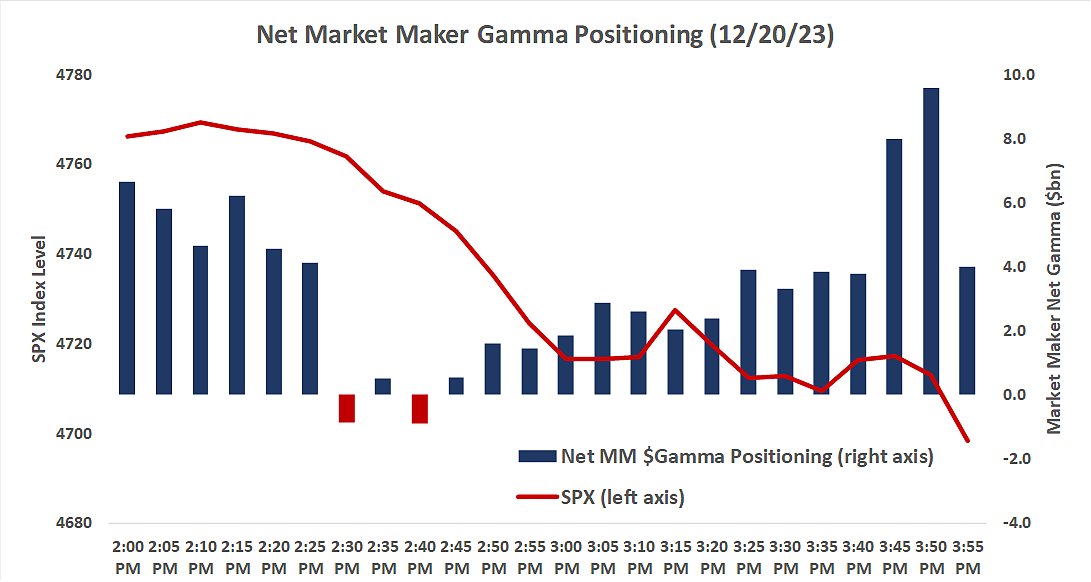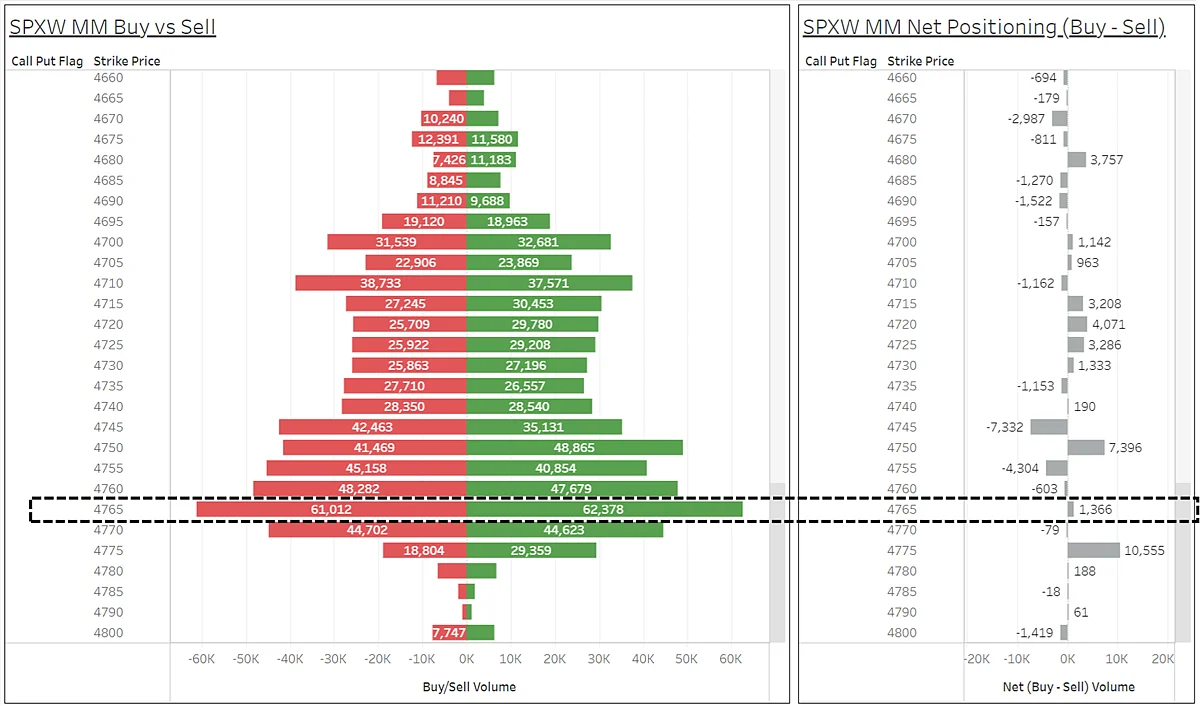Zero-Day Options Shouldn’t Be Blamed For Selloff, Cboe Says
Few financial topics have generated as much attention this year as zero-day-to-expiry options.

(Bloomberg) -- Contrary to what some Wall Street analysts are saying, a surge in trading of zero-day to expiry options shouldn’t be blamed for Wednesday’s drop in the S&P 500 Index, according to Cboe Global Markets Inc.
As the broad equities benchmark sank in the last two hours of the session, trading picked up in put options on the index that expired the same day, pushing dealers on the other side of the trade to buy or sell futures or other instruments to balance their positions. A number of analysts cited that so-called “gamma” hedging for accelerating Wednesday’s slide.
But market makers were mostly long gamma throughout the selloff, Cboe data shows, meaning they were essentially going against the prevailing trend and actually buying stocks as they fell.
“This means, if anything, their hedging activity would have been a stabilizer rather than a primary driver of the selloff,” said Mandy Xu, head of derivatives market intelligence at the Chicago-based exchange operator. “All the headlines are once again…much ado about nothing.”

Few financial topics have generated as much attention this year as zero-day-to-expiry options, and even fewer triggered as heated a debate. Short-dated contracts have become a key driver of the growth in options, the fastest-expanding area of equities markets.
Earlier: Vilified Zero-Day Options Blamed by Traders for S&P Decline (2)
The S&P 500 fell 1.5% to 4,698.35 on Wednesday, with the drop starting at around 2:15 p.m. and running until the close of trading. Options activity in the index that day was concentrated around puts at 4,755-4,765. For the S&P 500 4,765 put expiring Wednesday — the second most-traded contract that day — buying exceeded selling by only about 1,000 contracts, the exchange’s data show.

Strategists at JPMorgan Chase & Co. said the imbalance between selling and buying in the S&P 500 futures built up to $9 billion at the end of Wednesday’s session, with the buying-selling imbalance in S&P futures due to 0DTE option volumes responsible for a big chunk of it. The firm’s strategists earlier said they see a “Volmageddon 2.0” risk from 0DTE options similar to the volatility implosion in 2018.
“Market liquidity has declined looming into this holiday season,” JPMorgan strategists including Emma Wu wrote in a note to clients, discussing the liquidity environment on Wednesday. “A lower liquidity environment could amplify the market impact, representing a further down move on top of the market shock.”
(Updates with a comment from JPMorgan in eighth paragraph)
More stories like this are available on bloomberg.com
©2023 Bloomberg L.P.